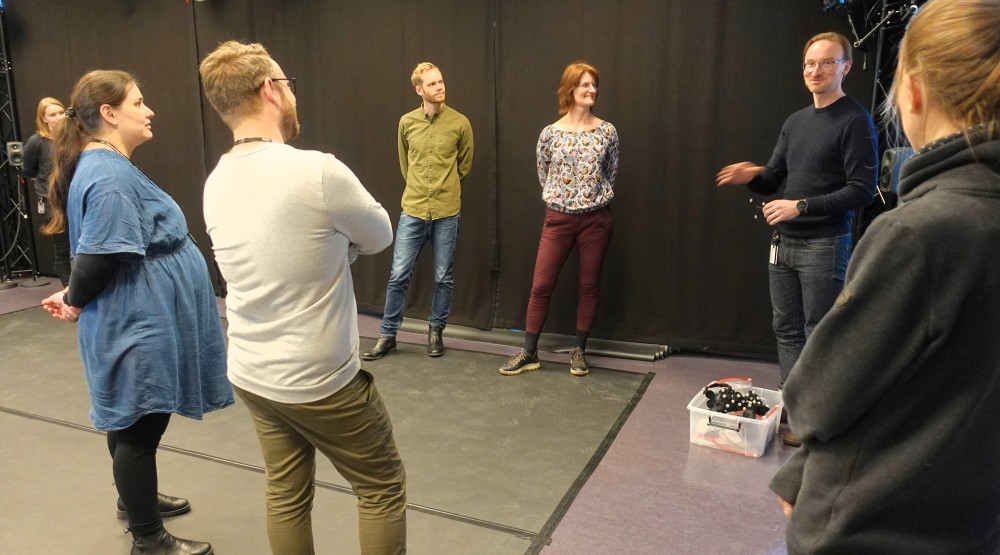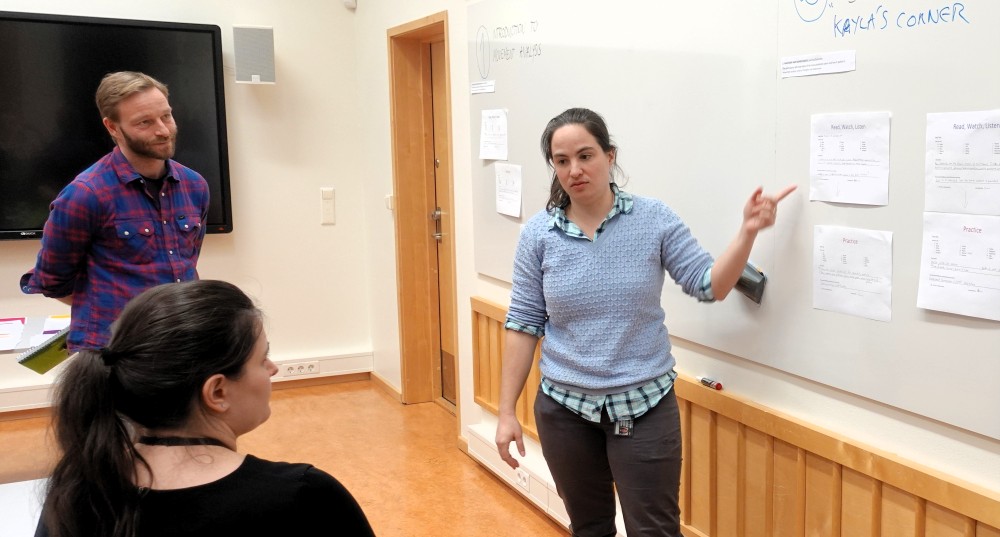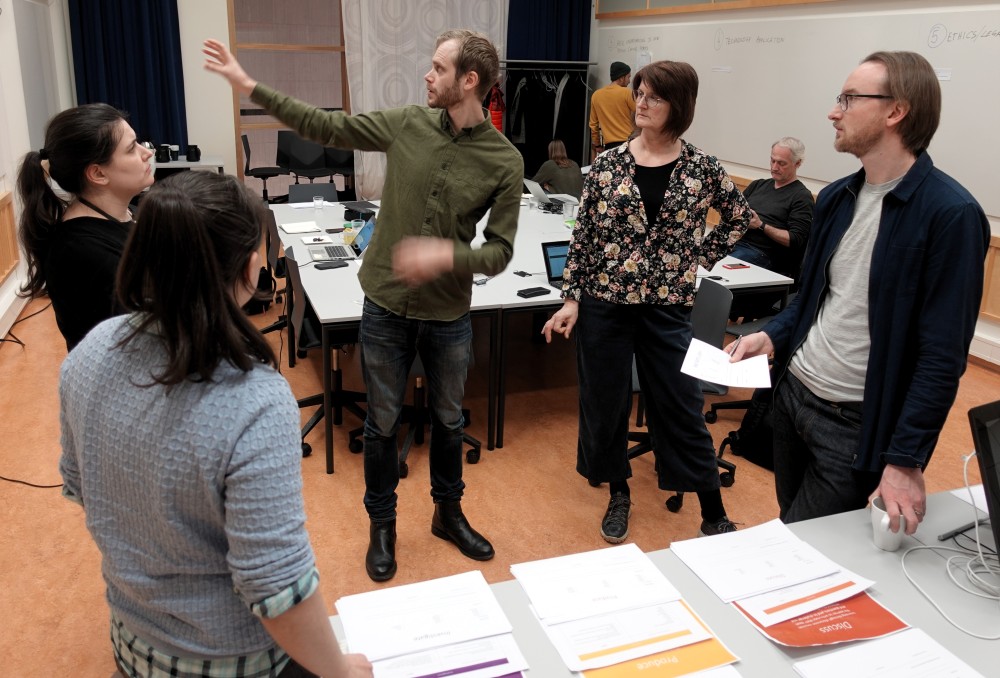After two years in the making, I am happy to finally introduce our new online course: Motion Capture: The art of studying human activity.
The course will run on the FutureLearn platform and is for everyone interested in the art of studying human movement. It has been developed by a team of RITMO researchers in close collaboration with the pedagogical team and production staff at LINK – Centre for Learning, Innovation & Academic Development.
Motivation
In the past, we had so few users in the fourMs lab that they could be trained individually. With all the new exciting projects at RITMO and an increasing amount of external users, we realized that it was necessary to have a more structured approach to teaching motion capture to new users.
The idea was to develop an online course that would teach incoming RITMO students, staff, and guests about motion capture basics. After completing the online course, they would move on to hands-on training in the lab. However, once the team started sketching the content of the course, it quickly grew in scope. The result is a six-week online course, a so-called massive open online course (MOOC) that will run on the FutureLearn platform.

MOOC experience
Developing a MOOC is a major undertaking, but we learned a lot when we developed Music Moves back in 2015-2016. Thousands of people have been introduced to embodied music cognition through that course. In fact, we will run it for the seventh time on 24 January 2022.
Motion capture is only mentioned in passing in Music Moves. Many learners ask for more. Looking around, we haven’t really found any general courses on motion capture. There are many system-specific tutorials and courses, but not any that introduce the basics of motion capture more broadly. As I have written about in the Springer Handbook of Systematic Musicology (open access version), there are many types of motion capture systems. Most people think about the ones where users wear a suit with reflective markers, but this is only one type of motion capture.
From biomechanics to data management
In the new Motion Capture course, we start with teaching the basics of human anatomy and biomechanics. I started using motion capture without that knowledge myself and have later realized that it is better to understand a bit about how the body moves before playing with the technology.

The following weeks in the course contain all the information necessary to conduct a motion capture experiment: setting up cameras, calibrating the system, post-processing, and analysis. The focus is on infrared motion capture, but some other sensing technologies are also presented, including accelerometers, muscle sensors, and video analysis. The idea is not to show everything but to give people a good foundation when walking into a motion capture lab.
The last week is dedicated to data management, including documentation, privacy, and legal issues. These are not the most exciting topics if you want to motion capture. But they are necessary if you’re going to research according to today’s regulations.
From idea to course
Making a complete online course is a major undertaking. Having done it twice, I would compare it to writing a textbook. It helps with prior experience and a good team, but it is still a significant team effort.
We worked with UiO’s Centre for Learning, Innovation and Academic Development, LINK, when developing Music Moves, and I also wanted to get them on board for this new project. They helped structure the development into different stages: ideation, development of learning outcomes, production planning, and production. It is tempting to start filming right away, but the result is much better if you plan properly. The last time we made the quizzes and tests last, and this time, I pushed to make them first to know the direction we were heading.

Video production
In Music Moves, we did a lot of “talking head” studio recordings, like this one:
It works in bringing over content, but I look uncomfortable and don’t get through the content very well. I find the “dialogue videos” much more engaging:
Looking at the feedback from learners (we have had around 10 000 people in Music Moves over the years!), they also seem to engage more with less polished video material. So for Motion Capture, we decided to avoid “lecture videos”. Instead, we created situations where pairs would talk about a particular topic. We wrote scripts first, but the recordings were spontaneous, making for a much more lively interaction.
The course production coincided with MusicTestLab, an event for testing motion capture in a real-world venue. The team agreed to use this event as a backdrop for the whole course, making for a quote chaotic recording session. Filming an online course in parallel to running an actual experiment that was also streamed live was challenging, but it also gives the learners an authentic look into how we work.

Ready for Kick-off
The course will run on FutureLearn from 24 January 2022. In the last months, we have done the final tweaking of the content. Much effort has also been put into ensuring accessibility. All videos have been captioned, images have been labelled, and copyrights have been checked. That is why I compare it to writing a textbook. Writing the content is only part of the process. Similarly, developing a MOOC is not only about writing texts and recording videos. The whole package needs to be in place.
Music Moves has been running since 2016 and is still going strong. I am excited to see how Motion Capture will be received!